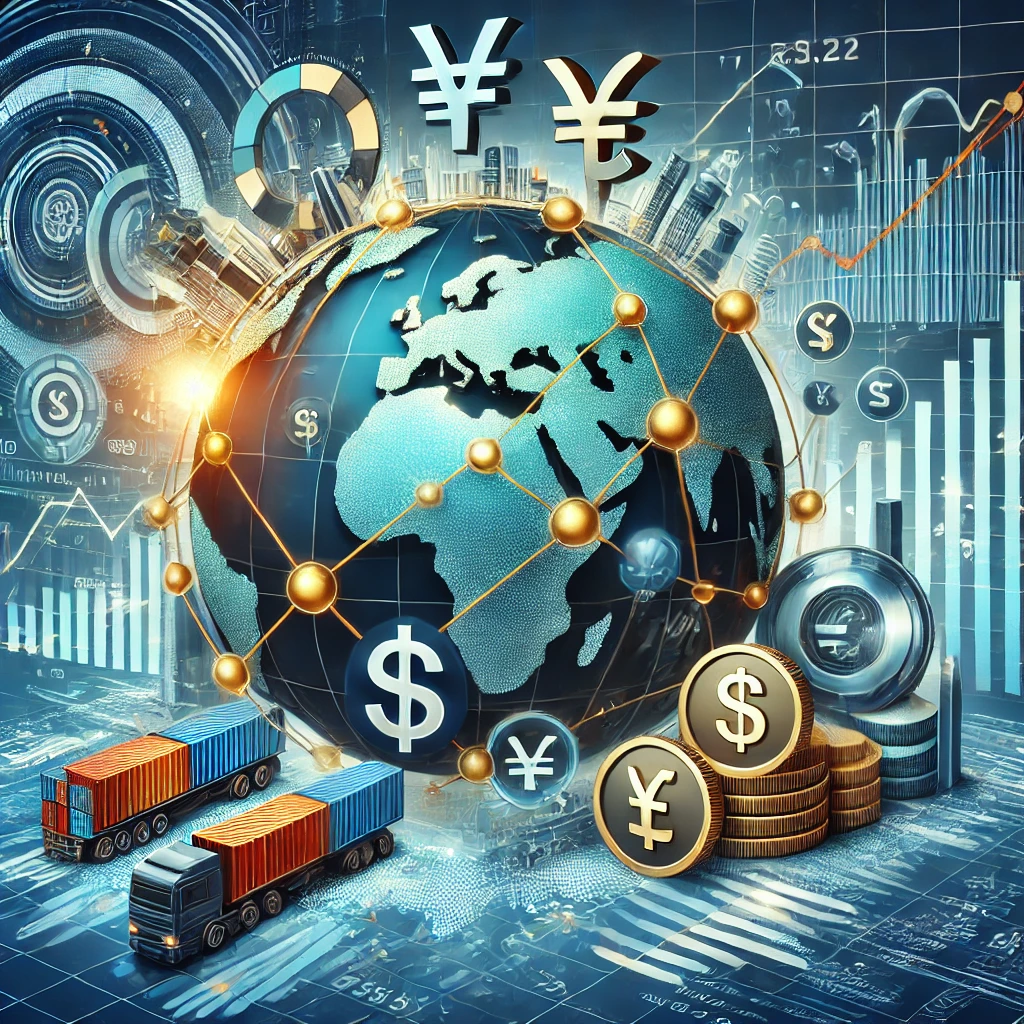Global Economics: Understanding the Interconnected World Economy

Global economics, also known as international economics, examines the interconnected financial systems, trade networks, and policies that shape the world’s economic landscape. It explores how countries interact through trade, investment, and monetary systems, and how these interactions impact global growth, inequality, and development. In an increasingly interconnected world, understanding global economics is crucial for addressing challenges like poverty, climate change, and financial instability.
The Importance of Global Economics
Global economics is vital for:
- Promoting Trade and Investment:
- Encouraging international exchange of goods, services, and capital.
- Managing Global Crises:
- Coordinating responses to economic shocks, pandemics, and climate change.
- Reducing Inequality:
- Facilitating development in low-income countries through aid and trade.
- Understanding Economic Interdependence:
- Highlighting the interconnection of economies in the global market.
Key Concepts in Global Economics
1. International Trade
International trade involves the exchange of goods and services between countries.
- Benefits:
- Specialization: Countries focus on producing goods where they have a comparative advantage.
- Economies of Scale: Larger markets enable more efficient production.
- Consumer Choice: Access to a wider variety of goods and services.
- Trade Theories:
- Absolute Advantage:
- Proposed by Adam Smith, it suggests countries should export goods they can produce more efficiently than others.
- Comparative Advantage:
- Introduced by David Ricardo, it highlights that countries benefit from trade even if one is more efficient in producing all goods.
- Absolute Advantage:
2. Global Supply Chains
Global supply chains connect producers and consumers across multiple countries.
- Impact:
- Cost reductions through outsourcing and offshoring.
- Increased vulnerability to disruptions, as seen during the COVID-19 pandemic.
3. Foreign Direct Investment (FDI)
FDI occurs when businesses invest in foreign countries, such as establishing factories or acquiring local firms.
- Advantages:
- Boosts economic development by creating jobs and transferring technology.
- Strengthens global economic ties.
- Challenges:
- Potential for exploitation and dependency on foreign capital.
4. Exchange Rates
Exchange rates determine the value of one currency relative to another.
- Fixed Exchange Rates:
- Pegged to another currency, providing stability.
- Floating Exchange Rates:
- Determined by market forces, offering flexibility.
Exchange rate fluctuations affect trade, investment, and inflation.
5. Global Financial Markets
Global financial markets facilitate the movement of capital across borders.
- Key Elements:
- Stock markets, bond markets, and currency markets.
- Risks:
- Volatility and the potential for financial crises.
The Role of Institutions in Global Economics
Several institutions shape the global economic order:
1. World Trade Organization (WTO)
- Purpose:
- Facilitates free trade by reducing barriers and resolving disputes.
- Criticism:
- Accusations of favoring wealthy nations and neglecting environmental concerns.
2. International Monetary Fund (IMF)
- Purpose:
- Provides financial support and advice to countries facing economic crises.
- Criticism:
- Imposition of austerity measures that may harm vulnerable populations.
3. World Bank
- Purpose:
- Funds development projects to reduce poverty.
- Criticism:
- Concerns over environmental and social impacts of funded projects.
4. Regional Trade Agreements
- Examples:
- European Union (EU), North American Free Trade Agreement (NAFTA), and ASEAN Free Trade Area (AFTA).
- Impact:
- Promote regional integration and economic growth.
Key Issues in Global Economics
1. Globalization
Globalization refers to the increasing interconnectedness of economies through trade, investment, and communication.
- Advantages:
- Economic growth, innovation, and cultural exchange.
- Disadvantages:
- Inequality, environmental degradation, and cultural homogenization.
2. Trade Wars and Protectionism
Trade wars occur when countries impose tariffs and other barriers to protect domestic industries.
- Examples:
- U.S.-China trade war over tariffs and technology.
- Impact:
- Disrupts supply chains and increases costs for consumers.
3. Economic Inequality
Global inequality persists despite economic growth.
- Causes:
- Uneven distribution of trade benefits.
- Limited access to technology and capital in developing countries.
- Solutions:
- Fair trade policies, investment in education, and development aid.
4. Climate Change
Economic activities significantly impact the environment.
- Challenges:
- Transitioning to renewable energy and reducing carbon emissions.
- Global Efforts:
- Paris Agreement and carbon trading mechanisms.
5. Debt Crises
Developing countries often face unsustainable debt levels.
- Causes:
- Overborrowing and unfavorable loan terms.
- Solutions:
- Debt restructuring and international cooperation.
Tools of Analysis in Global Economics
1. Trade Balance
- Definition:
- The difference between exports and imports.
- Trade Surplus: Exports > Imports.
- Trade Deficit: Imports > Exports.
2. Economic Indicators
- Key Metrics:
- GDP, inflation, unemployment, and foreign exchange reserves.
3. Comparative Analysis
- Examines economic performance across countries.
4. Game Theory
- Analyzes strategic interactions in trade negotiations and alliances.
Case Studies in Global Economics
1. The Great Recession (2008)
- Triggered by the collapse of the U.S. housing market.
- Global Impact:
- Widespread unemployment, financial instability, and government bailouts.
2. China’s Economic Rise
- Growth Drivers:
- Export-led growth, FDI, and technological advancement.
- Impact:
- Shifted the global economic balance and increased competition.
3. European Sovereign Debt Crisis
- Affected countries like Greece, Spain, and Italy.
- Highlighted the need for fiscal discipline and monetary coordination.
The Future of Global Economics
1. Digital Transformation
- Impact:
- E-commerce, fintech, and cryptocurrencies reshape trade and finance.
2. Green Economy
- Focus:
- Investing in sustainable industries and reducing environmental impact.
3. Regionalism vs. Globalism
- Trend:
- Balancing regional integration with global cooperation.
4. Artificial Intelligence
- Potential:
- Enhances productivity and decision-making but raises concerns over job displacement.
Conclusion
Global economics provides a comprehensive framework for understanding the complexities of the world economy. By examining trade, investment, policy, and institutions, we can address pressing challenges and create a more equitable and sustainable future. As the world becomes increasingly interconnected, global economics will remain at the forefront of shaping progress and prosperity for all.



